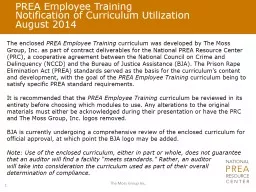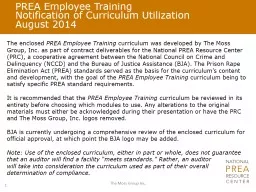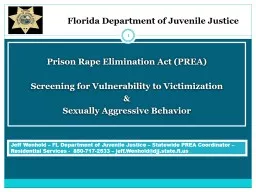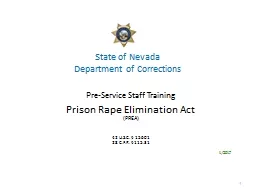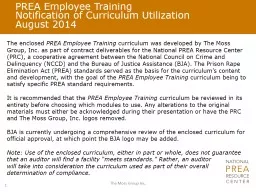PPT-PREA Employee Training
Author : pamella-moone | Published Date : 2016-05-13
Notification of Curriculum Utilization August 2014 The enclosed PREA Employee Training curriculum was developed by The Moss Group Inc as part of contract deliverables
Presentation Embed Code
Download Presentation
Download Presentation The PPT/PDF document "PREA Employee Training" is the property of its rightful owner. Permission is granted to download and print the materials on this website for personal, non-commercial use only, and to display it on your personal computer provided you do not modify the materials and that you retain all copyright notices contained in the materials. By downloading content from our website, you accept the terms of this agreement.
PREA Employee Training: Transcript
Download Rules Of Document
"PREA Employee Training"The content belongs to its owner. You may download and print it for personal use, without modification, and keep all copyright notices. By downloading, you agree to these terms.
Related Documents

